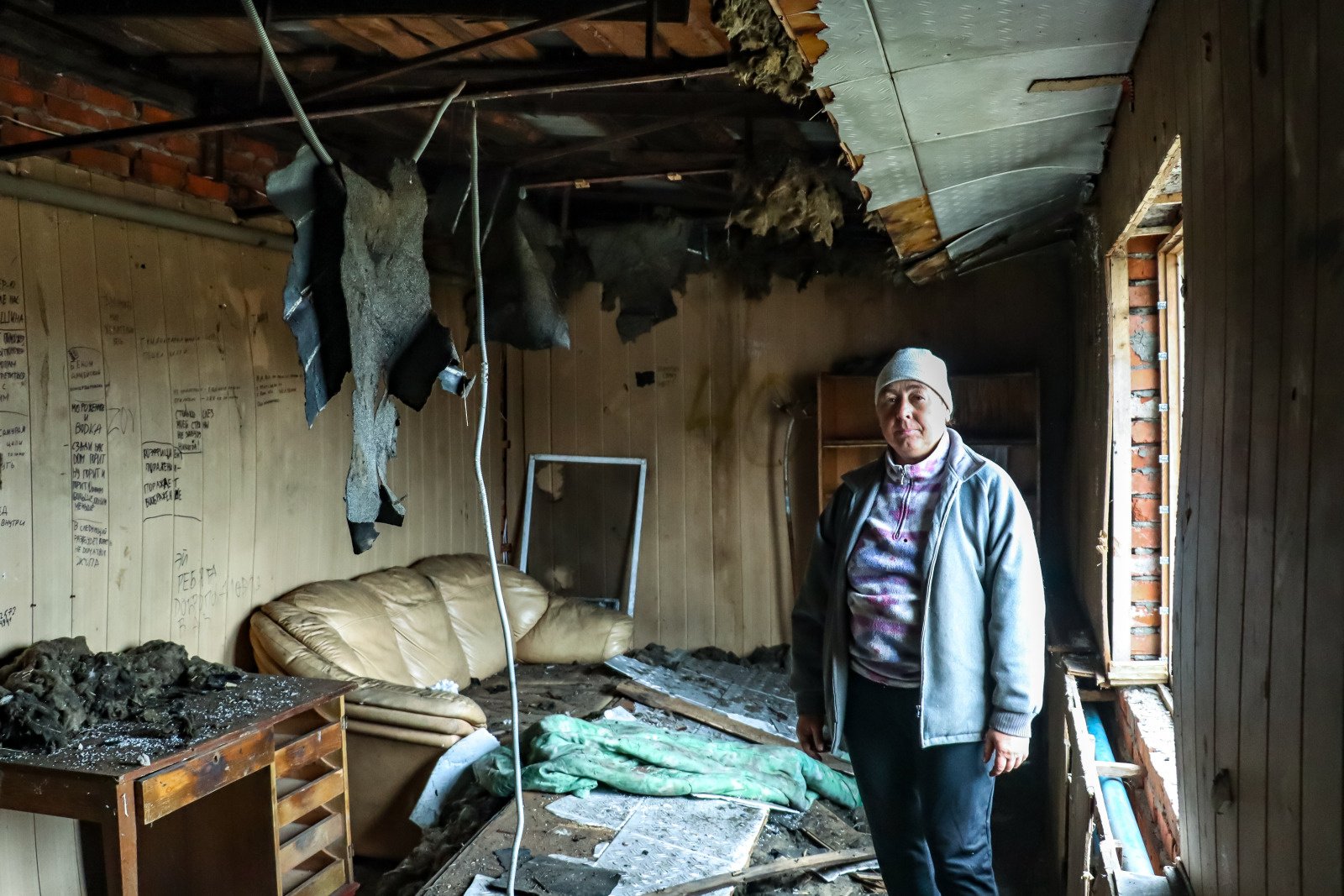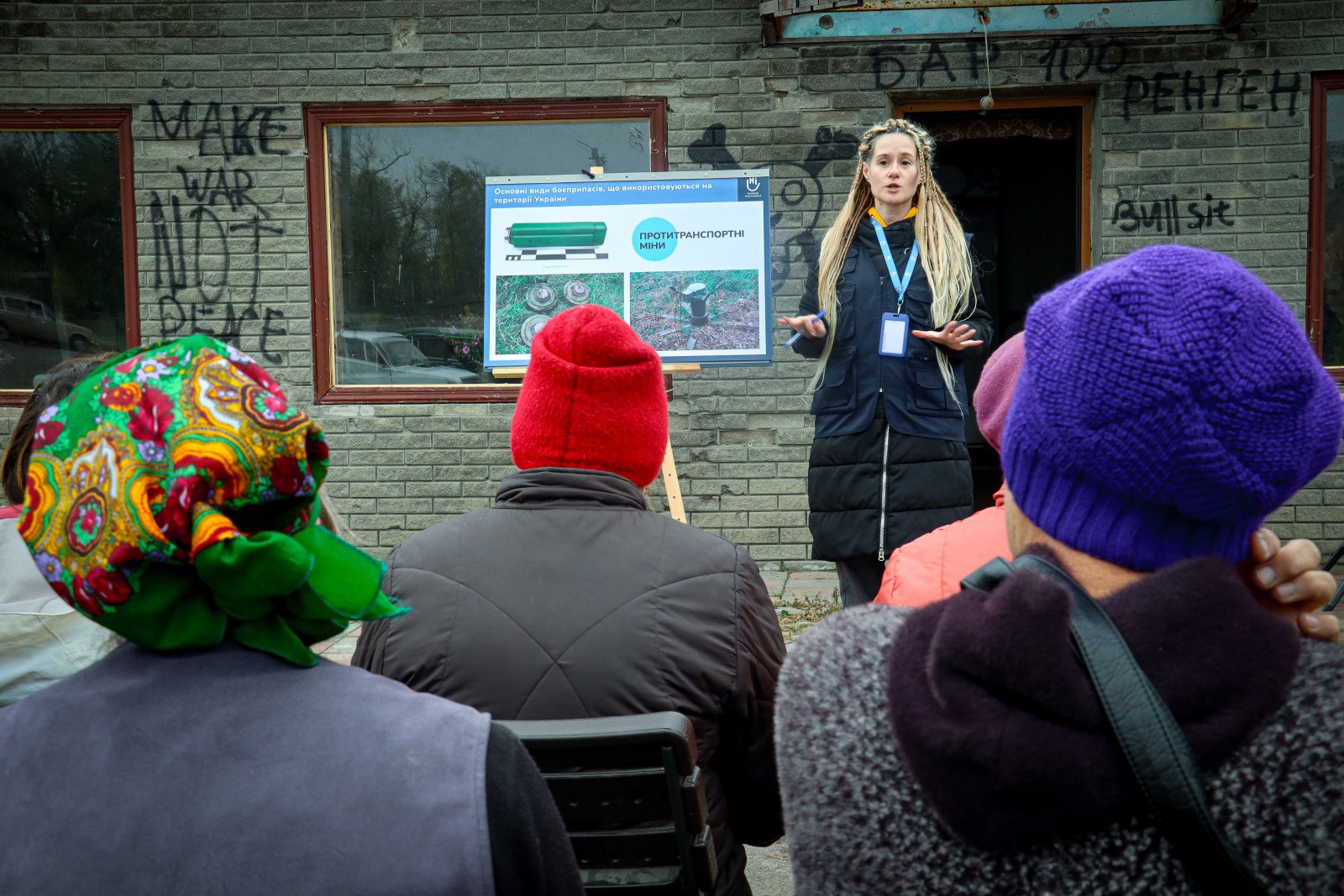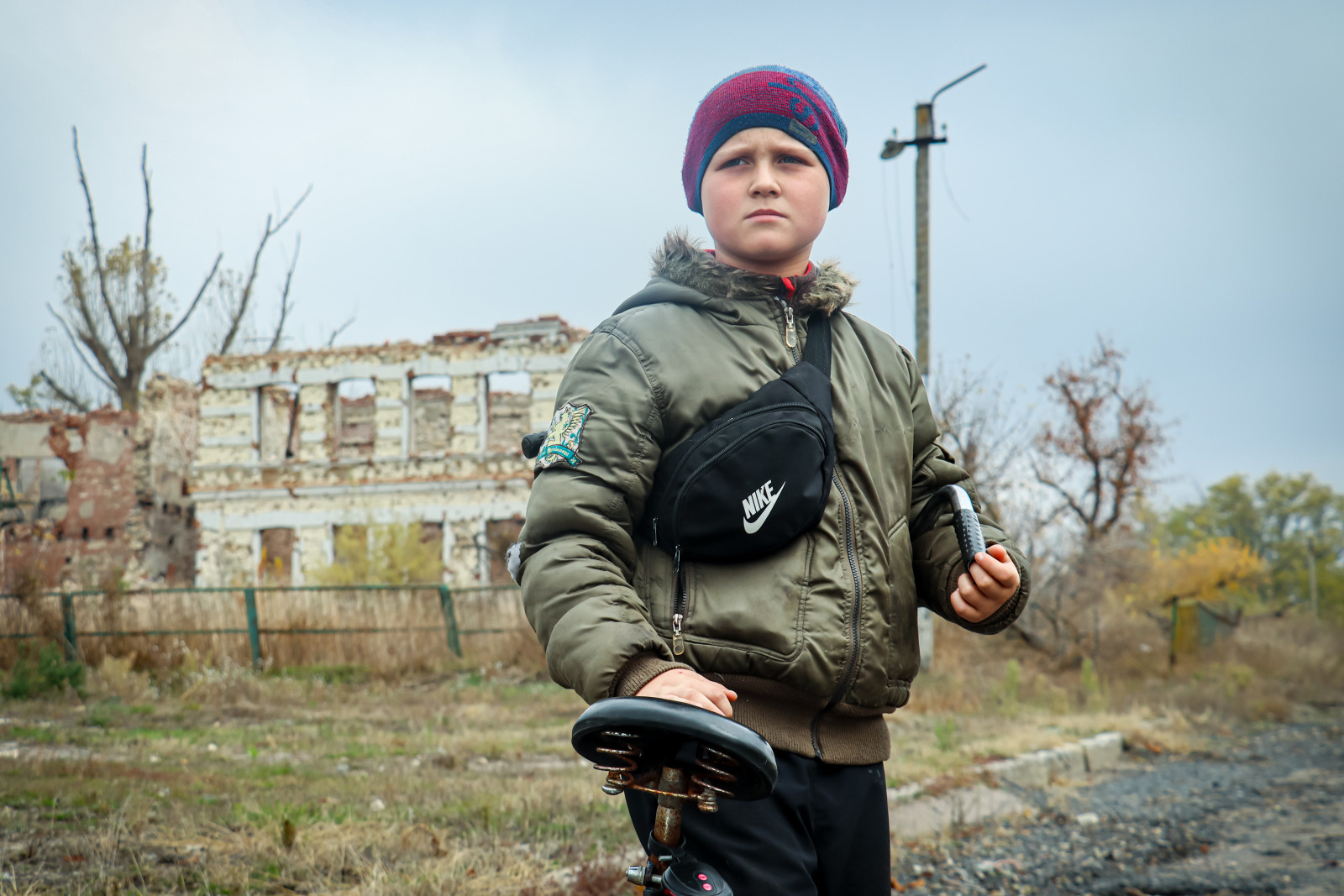Velyka Komyshuvakha is a farming village more than a three-hour drive from Kharkiv in the East of Ukraine. The village was occupied by Russian troops from April to September 2022. Since then, only 95 of the 521 villagers have returned to their land to try to rebuild their homes and restart their lives. But Velyka Komyshuvakha is 90% destroyed, and all the surrounding fields are contaminated by landmines and other explosive remnants of war.
Residents and visitors were once greeted by a cafe at the village entrance. Once a place of community gathering, the building is in ruins. It was used as a "base" by Russian soldiers. A group of women with shovels and trash bags are trying to clear away the rubble and remove graffiti. Among them is 53-year-old Inna, pictured below. This former farmer is helping the village council to rebuild the village; her own house was destroyed in the fighting.

"We used to have everything: cows, pigs, poultry, everything. Now we have nothing," Inna explains. "The skeletons of my cows are still lying nearby. Today, I mainly work for the village council helping to clear the rubble. The school and the village center have been completely bombed out, and all the seed warehouses have collapsed. My own house was destroyed; we're in the process of repairing it and building new walls."
Dangerous explosive remnants of war
But for Inna, the biggest problem is the landmines! According to her, all the fields surrounding her village and neighboring towns are mined.
"My godson was about to plant some vegetables when a mine exploded right next to him," she says. "Fortunately, he's still alive, but his elbow won't bend and his back was injured by shrapnel."
According to data collected and verified by the Ukrainian National Mine Action Authority, there have been more than 860 casualties due to explosive devices since February 2022, with 269 dead. Most of the accidents reported were caused by landmines.
This is why HI’s teams are carrying out awareness-raising activities in these villages, which have found themselves literally cut off from the rest of the world because of the conflict.
HI helps people to identify the different types of explosive ordnance, explaining why it is dangerous and what types of injuries it can cause. The risk education officers then explain the behavior to adopt to protect themselves should they come across an explosive device.
For Victoria Vdovichuk, a former deminer who is the team leader of HI's awareness-raising activities in the Kharkiv region, it is essential to reach the people living in these villages:
"The damage is enormous, the area is highly contaminated and extremely dangerous. All the different explosive devices used in the war can be found here: mines, tripwires, anti-personnel mines, anti-vehicle mines, not to mention cluster bombs and artillery shells of all calibers. But the villagers came back anyway and are living here today. In fact, some of them never left. This means that every day they walk by contaminated areas. And every day, they put their lives in danger because they don't know what to do if they come across these explosive remnants of war. They don't know that they should never touch them, let alone walk on them! It's obviously very dangerous!
 The youngest participant in these awareness sessions is 11-year-old Nazar. What was once his school has been bombed a dozen times over the last two years. He says he has already come across explosive remnants in his village; he has even seen some explode right before his very eyes. Both curious and frightened, he points to the remnants of explosive devices littering the village's narrow streets, hidden in the grass or marked with a white ribbon (an unofficial warning sign):
The youngest participant in these awareness sessions is 11-year-old Nazar. What was once his school has been bombed a dozen times over the last two years. He says he has already come across explosive remnants in his village; he has even seen some explode right before his very eyes. Both curious and frightened, he points to the remnants of explosive devices littering the village's narrow streets, hidden in the grass or marked with a white ribbon (an unofficial warning sign):
"What I remember most from the sessions is that if I see something suspicious in the street, I have to move away from it and call the emergency services," Nazar says.
Internal borders drawn by explosive remnants
In Ukraine, the scars left by the massive use of explosive weapons are like deep trenches. They cut off whole swaths of Ukraine from the rest of the world, making it extremely difficult not just to make a living, but even to meet basic needs. Like most of the inhabitants of this rural area, Inna has to travel at least 15 miles to do her shopping or get medical treatment.
"There's nothing left here," she reflects. "We don't have a cafe or a shop. With a bit of luck, every Wednesday a doctor will come and see us. Otherwise, who cares about us? At least here, we can be grateful to have received building materials, so that we can rebuild our homes. But for all the people who will one day want to return to their homes elsewhere in Ukraine, they will have no home and nowhere to go back to."
Since 2022, these explosive ordnance risk education (EORE) and conflict-preparedness (CPP) sessions have reached approximately 89,000 people in Ukraine. HI has organized more than 3,500 sessions (online and in person) and trained 2,770 humanitarian actors and 337 community focal points.





 The youngest participant in these awareness sessions is 11-year-old Nazar. What was once his school has been bombed a dozen times over the last two years. He says he has already come across explosive remnants in his village; he has even seen some explode right before his very eyes. Both curious and frightened, he points to the remnants of explosive devices littering the village's narrow streets, hidden in the grass or marked with a white ribbon (an unofficial warning sign):
The youngest participant in these awareness sessions is 11-year-old Nazar. What was once his school has been bombed a dozen times over the last two years. He says he has already come across explosive remnants in his village; he has even seen some explode right before his very eyes. Both curious and frightened, he points to the remnants of explosive devices littering the village's narrow streets, hidden in the grass or marked with a white ribbon (an unofficial warning sign):